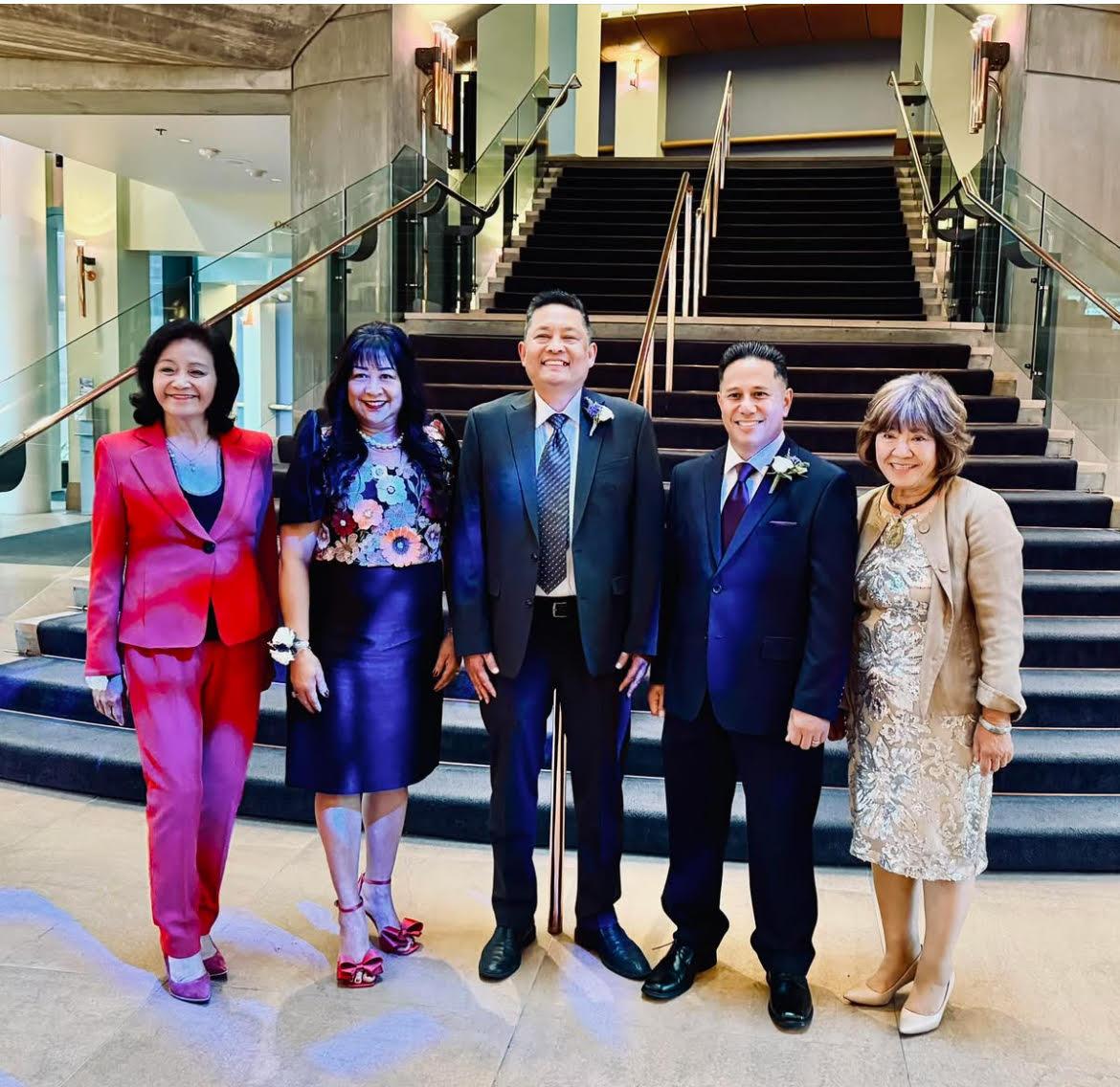December begins with 7K new cases, officials prepare for a forthcoming surge from Thanksgiving travel, large gatherings
IN an effort to curb the spike in coronavirus cases and deaths, Los Angeles County issued a strict stay-at-home order that took effect on Monday, Nov. 30.
The order, which was announced on Friday, will remain in effect until at least Dec. 20 and urges people to stay home for the next three weeks. The order places new limits on out-of-home gatherings, activities and business patronage.
LA County Public Health issued the order as a response to the dramatic uptick in cases that immediately followed the week of Thanksgiving, which saw a disturbing increase of travel despite orders from the Centers of Disease Control (CDC) to avoid holiday travel.
 On Tuesday, Dec. 1, LA County reported 7,593 new cases, the highest single-day report which doesn’t include cases reported by Long Beach and Pasadena. At least 46 new coronavirus-related deaths in the county (excluding Long Beach and Pasadena) were also reported on Tuesday. (It’s unclear whether or not the increase is due to more people testing or a backlog in test results.)
On Tuesday, Dec. 1, LA County reported 7,593 new cases, the highest single-day report which doesn’t include cases reported by Long Beach and Pasadena. At least 46 new coronavirus-related deaths in the county (excluding Long Beach and Pasadena) were also reported on Tuesday. (It’s unclear whether or not the increase is due to more people testing or a backlog in test results.)
The previous single-day record was Nov. 23, which tallied 6,186 positive countywide cases.
“The most important action we can all take to stop the surge is to stay home as much as possible,” Dr. Barbara Ferrer, director of LA County Public Health, said at a briefing on Monday.
Ferrer led the new rollout of the new stay-at-home order that closes public playgrounds and places capacity limits on businesses, outdoor museums and galleries, zoos and aquariums and strongly prohibits gatherings with people from different households, excluding worship services and political demonstrations.
“Yes, we’re asking a lot. Yes, people are going to make more sacrifices, but if we don’t get this virus under control it will cost all of us dearly,” Ferrer added.
As it had been throughout the pandemic, LA County Public Health reminded the public once again to avoid non-essential travel and gatherings outside the home.
“Even if you don’t feel sick, the simple act of gathering with people outside your household is extremely risky right now. For the next 3 weeks, avoid doing activities that are not essential. People’s lives depend on it,” LA County Public Health tweeted on Tuesday.
Franco Dilig, a retired Navy veteran from Reseda, told the Asian Journal that he supports the general effort to lower coronavirus numbers in LA County, but he doesn’t believe that the current stay-at-home order will be effective.
“This isn’t the way to control behavior: people are going to do whatever they want and they’ll find ways to meet with others and congregate,” Dilig told the Asian Journal in a phone interview on Tuesday.
Dilig also mentioned that the order is “too restrictive” and especially lamented the closure of playgrounds and recreational facilities, which could prevent young children, like his 5-year-old granddaughter, from physical exercise. (Outdoor operations of fitness facilities, mini-golf, batting cages and go-kart racing remain open with 50% occupancy and public parks, beaches and hiking trails remain open.)
“We always wear masks when we go out and do all that we can to keep sanitized and all that, so it doesn’t make sense to restrict open areas just because there [are] other people — who are likely also wearing masks — there, too,” Dilig said, adding that although he and his family are capable of doing these things at home, “getting outside of the house was and is necessary [to] our mental well-being, too.”
“People think that these orders are controlling our lives, but it’s controlling the virus and the spread,” Danica Valenzuela, a communication student at Cal State Northridge, told the Asian Journal.
Valenzuela, 21, said that her family (whom she doesn’t live with) were among the thousands of families that traveled to other families’ homes for Thanksgiving, a decision she thought was “stupid and irresponsible.” She doesn’t know the results of their COVID-19 tests, but she continues to be worried as more families plan to travel for the Christmas and New Year holidays.
“I stayed home and didn’t attend even though I was pressured and almost guilted into spending time with my family,” said Valenzuela, who is studying biology with the hopes of working in the public health sector. “My family thought I was being too paranoid, but there’s a reason why [the CDC and other public health officials] urged us not to travel. We don’t want to risk spreading the disease because you could be asymptomatic but make someone else sick, someone who might be more at-risk.”
Filipinos, by nature, are extremely family oriented and the Christmas holiday is an extremely important holiday in the community, which Valenzuela said “definitely complicates” things.
“There’s almost a resistance to following the rules [among Filipinos] because we don’t think that it’ll happen to us because we’re strong, but then when it does happen, it’s too late,” Valenzuela said, acknowledging that although the Los Angeles Times article published in July about the COVID-19 mortality rate among Filipino Americans was “flawed” it “should be a warning to [the Filipino community].”
That piece posited that the mortality rate among Filipinos is a whopping 40%, but the only data used in that story came in the form of an unofficial list from the Philippine Consulate of Los Angeles that only comprised 48 COVID-19 patients, of which 19 had died of the virus.
Forty-eight is too small a sample size to really capture the virus’ effect on the largest Asian American community in California, but it doesn’t negate the fact that the virus is dangerous and has taken the lives of thousands of Filipinos, Valenzuela acknowledged.
“It’s true that the virus has had a really disturbing effect on our community, but we need to be realistic, too. But that doesn’t mean we’re immune to the possibility that we could reach a high mortality rate or a high case rate. It’s so much better to be safe and try to stay as stationery as we can than risk [worsening] the state of things just because you wanted to see your cousins,” she said.
The startling situation in LA County acts as a microcosm to the overall predicament happening at the state level. California surpassed its previous daily high of 20,654 positive coronavirus cases recorded last week to 21,848 on Monday.
The state acknowledged that the inflated numbers are due to delays in reporting tests following the Thanksgiving holiday, but as of press time, California is averaging 14,000 daily coronavirus cases over a seven-day period.
Pushing ICU capacity
In a press briefing on Monday, Gov. Gavin Newsom said that Southern California, specifically, is expected to run out of ICU capacity by mid- to late December if the uptick continues. Currently, 75% of the state’s 7,733 ICU beds are occupied with nearly 2,000 of them filled by COVID-19 patients.
Newsom hinted at possible additional shutdowns, which may increase Californians’ frustrations over the restrictive measures, but he and other state officials emphasized that solutions may be on the horizon in the form of the much anticipated vaccine rollouts.
At Monday’s briefing, officials announced that the state expects to receive roughly 327,000 doses of the new COVID-19 vaccine by Pfizer in the next few weeks but noted that the most vulnerable communities will be prioritized.
Widespread rollout of the vaccine to the general public will likely happen well into 2021, but Dr. Mark Ghaly, the state’s health and human services secretary, stressed the importance of the vaccine’s arrival.
“Our most vulnerable could be getting vaccinated, our frontline workers could be getting vaccinated in just a matter of weeks, opening the gateway to so many more receiving this important tool to protect us,” Ghaly said.






